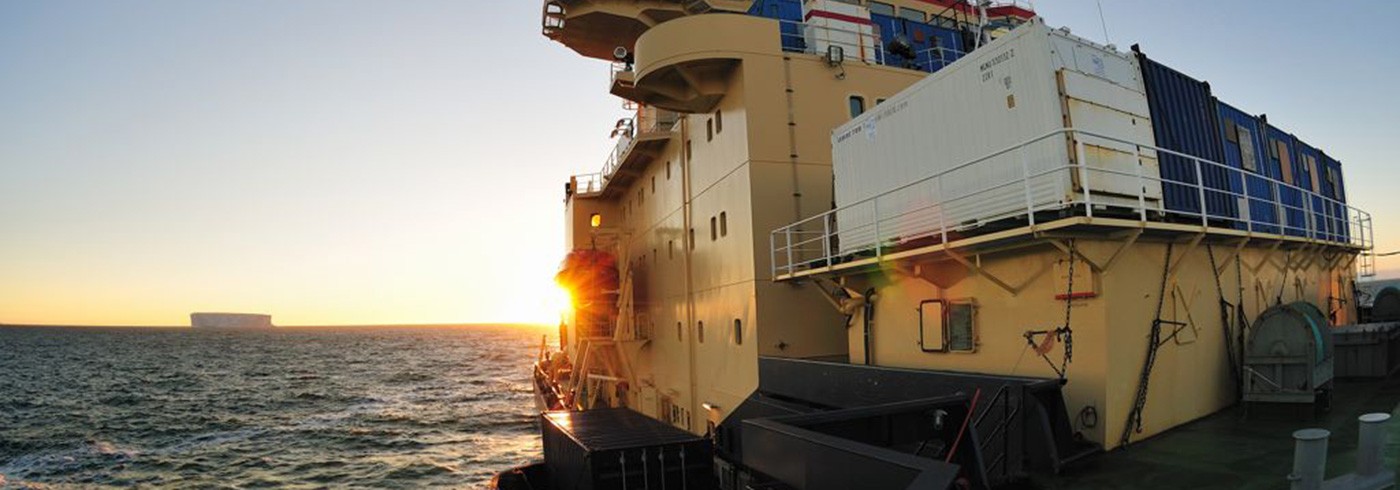A few days ago we left our main work area in the Amundsen Sea and started our long transect towards Punta Arenas in Chile. The plan is now to sneak between two major low pressure systems and to cross over to South America without being hit by one of the major storm systems that are always moving around Antarctica.
Most of the work has finished by now and the different science groups are busy preparing first analyses of the data and writing the cruise report.
Although we left our main working area and are on our way to Punta Arenas we continue to map the seafloor. The area around Antarctica is still poorly surveyed and most of the time we are collecting data in areas that have never been mapped before.
Before we left the Amundsen Sea, we passed the German research vessel Polarstern on their way to Pine Island Bay. It is very rare to have two ships at the time in this very remote part of the world, but it also shows how important this area is for different science group around the world. Similar to Oden the Polarstern has an international science team with scientists from Germany, United Kingdom, New Zealand, and Poland. They are also planning to take sediment samples and study the seafloor.
Because of the preparation and expense to get to this remote location, it is important to avoid unnecessary duplicating of our mapping and sampling efforts. Fortunately, the Polarstern has helicopters on board that they use for land operations and surveying. They invited a group of us over to Polarstern where we exchanged information about our science programs and coordinated further work in this area. For me it also provided the opportunity to meet some old friends and colleagues from the British Antarctic Survey and the German Alfred Wegener Institute that are working on board of Polarstern. It feels strange, but special to meet friends at this remote part of the earth.

